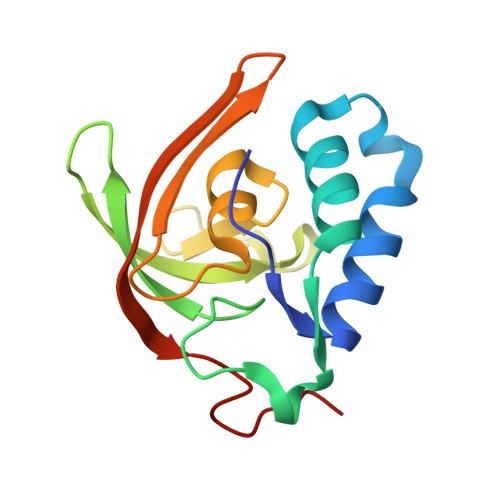Crystal structure of Escherichia coli Rnk, a new RNA polymerase-interacting protein.
Lamour, V., Rutherford, S.T., Kuznedelov, K., Ramagopal, U.A., Gourse, R.L., Severinov, K., Darst, S.A.(2008) J Mol Biol 383: 367-379
- PubMed: 18760284
- DOI: https://doi.org/10.1016/j.jmb.2008.08.011
- Primary Citation of Related Structures:
3BMB - PubMed Abstract:
Sequence-based searches identified a new family of genes in proteobacteria, named rnk, which shares high sequence similarity with the C-terminal domains of the Gre factors (GreA and GreB) and the Thermus/Deinococcus anti-Gre factor Gfh1. We solved the X-ray crystal structure of Escherichia coli regulator of nucleoside kinase (Rnk) at 1.9 A resolution using the anomalous signal from the native protein. The Rnk structure strikingly resembles those of E. coli GreA and GreB and Thermus Gfh1, all of which are RNA polymerase (RNAP) secondary channel effectors and have a C-terminal domain belonging to the FKBP fold. Rnk, however, has a much shorter N-terminal coiled coil. Rnk does not stimulate transcript cleavage in vitro, nor does it reduce the lifetime of the complex formed by RNAP on promoters. We show that Rnk competes with the Gre factors and DksA (another RNAP secondary channel effector) for binding to RNAP in vitro, and although we found that the concentration of Rnk in vivo was much lower than that of DksA, it was similar to that of GreB, consistent with a potential regulatory role for Rnk as an anti-Gre factor.
Organizational Affiliation:
Laboratory of Molecular Biophysics, The Rockefeller University, 1230 York Avenue, New York, NY 10021, USA.
















